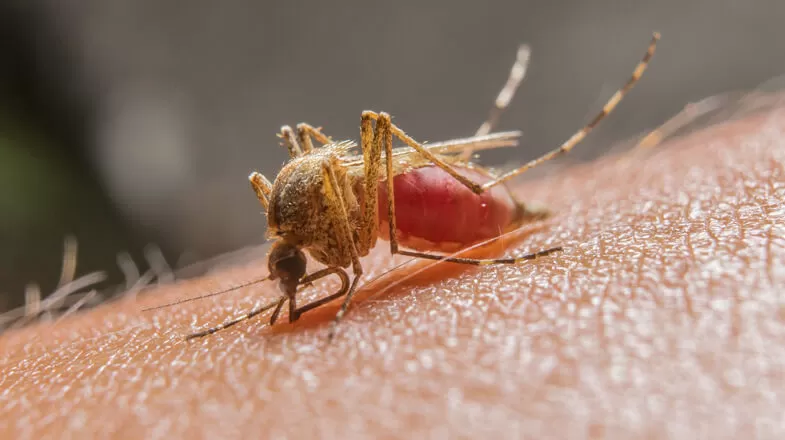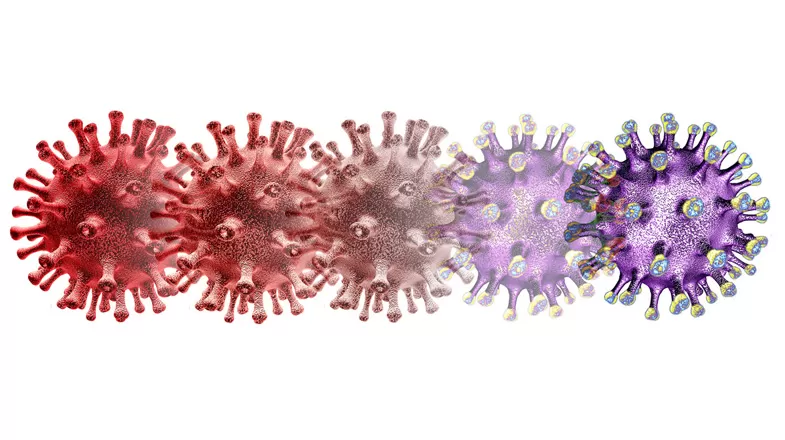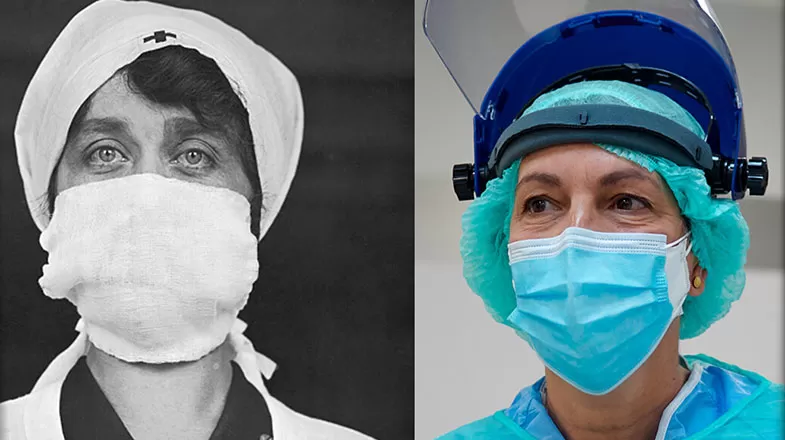Featured Articles
Read our latest stories on the people and scientific innovations making a difference in patients’ lives.

Science & Innovation
How to Manage High Blood Pressure (With the Help of a Few Giraffes)
People have long adored giraffes for their friendly faces, their tall and somewhat strange stature and, of course, those impossibly long necks. Now, researchers believe that giraffes may also offer physiological insights into certain health conditions. With a neck that can be longer than six feet, giraffes seemingly should struggle with the consequences of high blood pressure, also known as hypertension, because of their blood's substantial uphill climb from the heart to the brain. But they...

Living & Wellbeing
6 Mosquito Diseases That Can Be Deadly
Mosquitoes won’t just ruin a cookout or leave angry red welts on your skin after a blood meal; the little buzzers might also transmit serious diseases. Mosquitoes are "silent" feeders; their siphon-like mouthparts can quickly pierce human skin and feed on blood without causing any notice, says Patrick Kelly PhD, director of Global Epidemiology for Tick Borne Diseases for Pfizer. He calls it “highly efficient feeding that has been fine-tuned over millions of years.” Mosquitos have taken...

Purpose & Ideals
Why Medicine Flavor Matters in Drug Design, Especially for Kids
Medicines don’t work unless people take them. It sounds like an obvious statement. And yet, a large percentage of people—up to 50%1 even—struggle when it comes to swallowing medications. Medicine flavoring has been a big part of the problem. For more than a decade, Jeremy Bartlett, Ph.D., a Research Fellow with Pfizer Drug Product Design in Groton, Connecticut, has been working to solve that problem. “We work in pharmaceutical sciences, and if we develop a medicine you’re supposed to take and...

Living & Wellbeing
5 Things Worth Knowing About Biosimilars and Interchangeability
Biologic drugs have revolutionized disease management for many serious and chronic conditions including cancer, rheumatoid arthritis, Crohn’s disease, and psoriasis.1 Versions of biologic drugs, known as biosimilars, have helped improve access to these critical medicines for a wider patient population and lowered healthcare costs.2As biosimilars continue to hit the market in greater numbers, you’ll be hearing more about this class of drugs, as well as the “interchangeability” designation that...

Living & Wellbeing
What is a Variant?: Understanding the Virus Game-Changer
Viruses are different from one another in many ways, including how well they spread and which parts of the body they attack. One thing most viruses have in common, though, is that they have resourceful ways to survive our efforts to kill them. As they infect and reproduce in living things, their genetic makeup changes. Some changes, or mutations, can cause a virus to be more contagious or make the host more sick. This survival mechanism helps many of these viruses with genetic variations, known...

Real People
Bill Sessa is Ready to Deliver Breakthroughs for Common Diseases
“Despite advances in treatment, cardiovascular disease is still the number one killer worldwide,” says Bill Sessa, who joined Pfizer as Senior Vice President and Chief Scientific Officer for the Internal Medicine Research Unit (IMRU) in February 2022. “For decades, Pfizer has been at the forefront of advancing novel treatments for people living with cardiovascular and other conditions that affect a significant portion of the world’s population," Sessa says. "I’m thrilled to have the chance to...

Living & Wellbeing
Skipped Childhood Immunizations Could Lead to Resurgence of Vaccine-Preventable Diseases
Childhood vaccination rates dropped drastically during the COVID-19 pandemic, and it could potentially mean a resurgence of diseases we've long had under control. Approximately 66% of children aged 5 months in the United States were up to date for all CDC-recommended childhood vaccines in 2016-2019. By May 2020, that number declined to 49.7%. 1 A major driver of the downturn in vaccinations was canceled or skipped well-child visits. Shortly after the United States declared a national state of...

Living & Wellbeing
Addressing Disproportionate Childhood Vaccination
Vaccines for children should be available and accessible to all. And yet, despite decades of effort, significant disparities in childhood vaccination rates persist. In 2017, American Indian/Alaska Native children were 10% less likely to be fully immunized with CDC-recommended vaccines than non-Hispanic white children.1 Just 66.5% of Black children aged 19 to 35 months were fully immunized, compared to 71.5% of white children.2 Immunization rates for Asian-American, Hispanic, and non-Hispanic...

Purpose & Ideals
Pfizer’s Institute of Translational Equitable Medicine Addresses Equity in Health Research
When it comes to healthcare, the terms “equitable” and "access" often go hand-in-hand. In order to prevent, treat, and identify diseases that disproportionately impact underserved and minority populations, Pfizer believes that research must be directed to the root causes of healthcare disparities. The recently-launched Institute of Translational Equitable Medicine (ITEM) is intended to do just that: work toward a more equitable future of health care. For Aida Habtezion, M.D., who is Pfizer’s...

Programs & Initiatives
Shot of a Lifetime: How Two Pfizer Manufacturing Plants Upscaled to Produce the COVID-19 Vaccine in Record Time
After Pfizer and BioNtech signed a letter of intent in March 2020 to work together on a vaccine, two Pfizer facilities were swiftly selected for developing the processes and manufacturing the product at an industrial scale. Located in Puurs, Belgium, and Kalamazoo, Michigan, both plants had the space, the know-how, the people, and the equipment to get to work right away. Their locations in the U.S. and Europe positioned them well for global distribution.But even with all the right components...

Science & Innovation
Retrospect and Context: One Scientist's Thoughts on Comparing COVID-19 to the 1918 Flu Pandemic
A little over 100 years ago, about 500 million people, or one-third of the global population at the time, fell ill. At least 50 million died, with 675,000 deaths occurring in the U.S.1Today, the COVID-19 pandemic is frequently compared with the influenza pandemic of 1918-1919. The destruction caused by that pandemic a century ago may sound familiar. Yet, direct comparisons of the 1918 flu pandemic and the COVID-19 pandemic may not be completely fair, according to one scientist.While we’ve had a...

Living & Wellbeing
How Wearable Technology is Helping Scientists Better Understand Patients and Diseases
Like many people, Tim McCarthy, PhD, wears a watch that tracks his steps and monitors his activity levels. That watch also represents something else for McCarthy, who is Pfizer’s Head of Digital Medicine & Translational Imaging, which is part of Early Clinical Development in the company’s Worldwide Research, Development, and Medical Organization. For him, wearable technology could hold the power to better understand patients and diseases to improve healthcare. McCarthy acknowledges it’s still...
Media Resources & Contact Information
Anyone may view our press releases, press statements, and press kits. However, to ensure that customers, investors, and others receive the appropriate attention, Pfizer Media Contacts may only respond to calls and emails from professional journalists.
